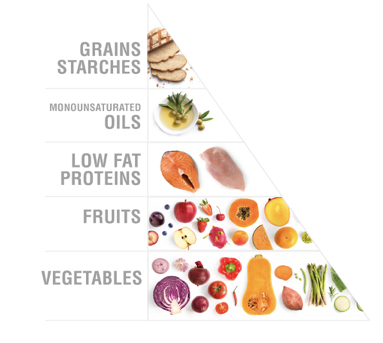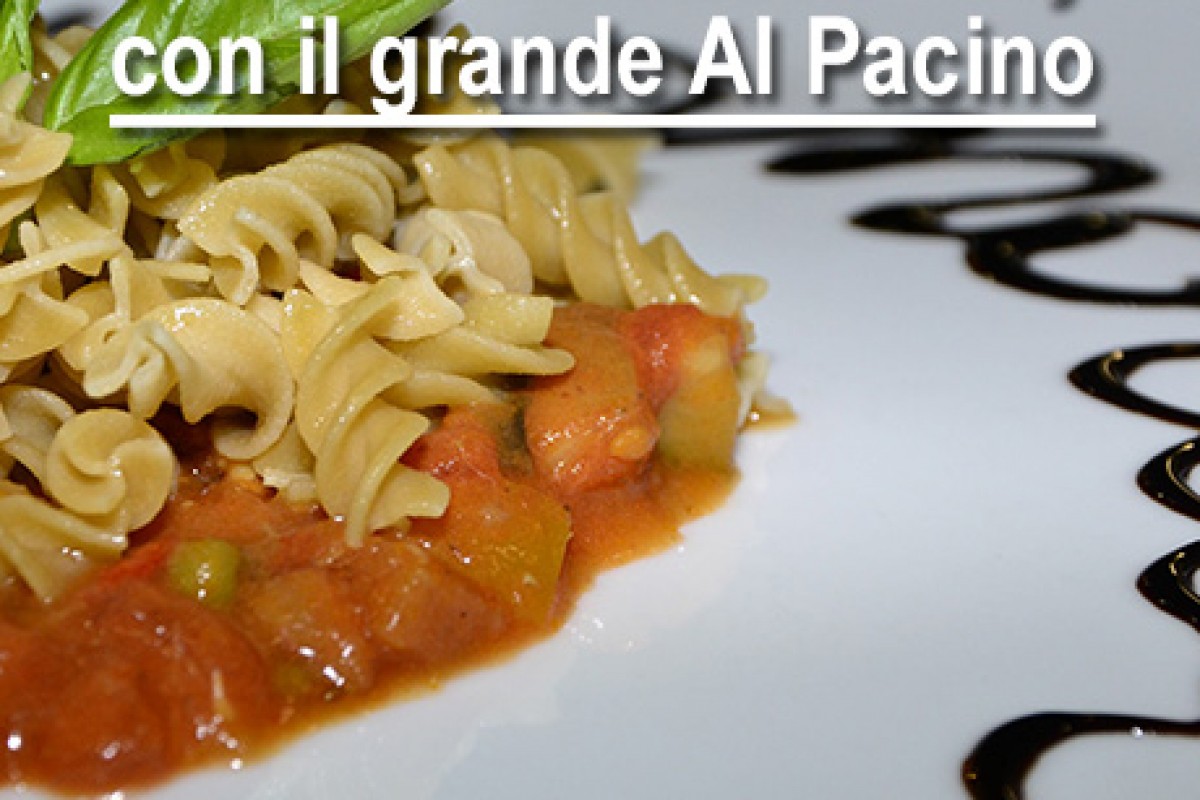
Dr. Sears’ War Against Inflammation
Dr. Sears’ War Against Inflammation
 Raffaella Quieti Cartledge
Raffaella Quieti Cartledge
Dr. Barry Sears, the developer of the anti-inflammatory Zone diet and president of the non-profit Inflammation Research Foundation, discusses how inflammation is the primary cause of chronic disease.
He also explains how diet can to support our bodies fight agaist inflammation including that coming from viral infections, like Covid-19, requires using our diet as a potent drug
Dr. Sears, what exactly is inflammation?
Inflammation is the body’s response to any type of injury. However, there are two distinct phases to inflammation; first, your body has to turn it on to stop the consequences of the injury, but then it also has to turn it off and repair the tissue damage caused by the inflammation. If the initial inflammatory response to an injury is not completely healed, then it becomes a new source of chronic low-level inflammation that that is below the perception of pain. It is this type of inflammation that is strongly associated with many chronic disease states, including metabolic (obesity and diabetes), cardiovascular, auto-immune, and neurogenerative disorders, as well as cancer.
What are some of the injuries that cause inflammation?
The types of injuries that can cause an initial inflammatory response are incredibly varied. These include physical injuries (internal and external), microbial and viral invasions, excess free radical formation, surgery, drugs, and stress (physical, emotional, and environmental). Since we are regularly exposed to inflammation resulting from these injuries, that’s why we need to turn off that initial inflammation to remain well. 
How does our body react when inflammation occurs?
Most of us are familiar with the consequences of turning on inflammation. The cardinal signs of inflammation are swelling, redness, fever, and pain. These classic responses are caused by molecular inflammatory mediators known as eicosanoids and cytokines that are central to orchestrating the acute inflammatory response to an injury. Their synthesis is a consequence of the activation of the master genetic switch of inflammation found in every cell. On the other hand, turning off inflammation is a far more complicated process than is turning on inflammation. This phase of inflammation is composed of a complex interaction of hormones and genes that resolves any remaining inflammation and then repairs the damaged tissue. This second phase of inflammation is known as the Resolution Response. Only when both initial inflammatory response and the Resolution Response phases are balanced, that healing of the injury results. In essence, we need some inflammation to survive, but we also need a strong Resolution Response to remain well.
How did you become interested in inflammation?
My interest began with the awarding of the 1982 Nobel Prize in medicine to Sune Bergstrom, Bengt Samuelsson, and John Vane for understanding the role of a group of inflammatory hormones known as eicosanoids (signaling molecules made from omega-6 fatty acids) as major players in the initiation of inflammation. This Nobel Prize led to my appreciation that the diet could reduce potentially reduce eicosanoid levels, and therefore reduce the intensity of inflammation.
My continued research into the role of diet and inflammation has expanded from this starting point to now understand it is not inflammation per se that is the cause of chronic disease. Chronic disease is the result of the continued blockage of the body’s internal Resolution Response. Just like eicosanoids that help turn on inflammation, the Resolution Response is also under significant dietary control.
So how do chronic diseases develop?
Unlike infectious diseases, chronic diseases take years, if not decades, to develop. This time lag is because chronic diseases are often the consequence of long-term accumulated organ damage caused by a blocked Resolution Response.
The injury that initially caused the tissue damage may have left the body many years earlier, but the incomplete healing of that initial inflammatory damage continues as a new source of inflammation to causing continuing organ damage leading to chronic disease. Now the individual will usually require long-term use of medication to treat the symptoms of that particular chronic disease (as well as other co-morbidities) that started years, if not decades, earlier with a blocked Resolution Response that continues into the present time.
Dr. Sears, let’s turn to Covid-19. Why do certain preconditions, such as obesity and diabetes, make people susceptible to mortality to Covid-19?
The existence of unresolved inflammation, as found in obesity and diabetes, inhibits the Resolution Response. When you have a blocked Resolution Response due to unresolved inflammation, you will also have increased levels of inflammatory mediators known as cytokines in the blood. Covid-19 causes the overproduction of even more cytokines leading to what is called a “cytokine storm.” This medical term describes the reason for the increased complications and mortality in Covid-19 patients. As a result, it could be argued that the severe complications seen in Covid-19 patients may be a consequence of a blocked Resolution Response.
It seems like a blocked Resolution Response is a major unrecognized health problem. Is there any drug we can use to optimize it?
Unfortunately, the answer is no because of the hormonal and genetic complexity of the Resolution Response. However, the Resolution Response is under significant dietary control. This understanding leads to the concept of using Pro-Resolution Nutrition to turn off inflammation and promote healing by optimizing your internal Resolution Response.
What are the main dietary components of Pro-Resolution Nutrition?
Pro-Resolution Nutrition is characterized by the 3 Rs of reduce, resolve, and repair. First, you have to reduce excess inflammation. I developed the Zone diet more than 30 years ago as an anti-inflammatory diet. The Zone diet is a personalized, calorie-restricted, protein-adequate, carbohydrate-moderate (but rich in fermentable fiber), low-fat (especially restricting pro-inflammatory saturated and omega-6 fats) diet that is an initial starting point for optimizing the Resolution Response.
However, reducing inflammation is only the first step toward healing. Next, you have to resolve the residual inflammation. Resolving inflammation requires adequate levels of omega-3 fatty acids in the diet to generate a recently discovered group of hormones known as resolvins that turn off inflammation. Sufficient levels can be obtained by consuming oily fish like sardines, anchovies, or salmon. Alternatively, one could use omega-3 fatty acid supplements to reach appropriate levels in the blood.
The final step of the Resolution Response to repair the tissue damage caused by inflammation is the most complex. This process is controlled by the master genetic switch of metabolism known as AMPK. The primary way to activate AMPK is the increased intake of polyphenols.
Polyphenols are compounds that give fruits and vegetables their color. To get enough polyphenols without excess glucose (which inhibits AMPK) requires consuming 8-10 servings per day of non-starchy vegetables. Polyphenol supplement can help provide the necessary amounts to activate AMPK.
It takes some effort and a few months to optimize your internal Resolution Response by following Pro-Resolution Nutrition. But without a robust Resolution Response, you are more likely to develop a chronic disease at an earlier age and be less likely to fight off viral infections. Both consequences of a blocked Resolution Response will result in a decreased state of wellness.
Dr Sears and the Pro-Resolution Nutrition
Dr. Sears has spent more than 40 years researching how the foods we eat can impact our hormones and the expression of our genes that are involved in turning on and turning off inflammation
How to follow Pro-Resolution Nutrition
Pro-Resolution Nutrition starts with the anti-inflammatory Zone diet to reduce inflammation. The Zone diet is based upon balancing your plate at every meal to reduce inflammation with the following balance of nutrients:
- Protein – 1/3rd of your plate, add some lean protein, about the size and thickness of your palm. Protein sources could include egg whites, fish, poultry, lean beef, or low-fat dairy. This level of protein will stop hunger for four to five hours by stabilizing blood glucose levels.
- Carbohydrates – 2/3rds of your plate at every meal is composed of colorful non-starchy vegetables with limited amounts of fruit to prevent the overconsumption of glucose that will inhibit AMPK activity.
- Fat – Add a little monounsaturated fat. This type of fat is found in olive oil, avocados, or almonds.
How the Zone diet compares to the Mediterranean diet
The Zone diet should be considered the evolution of the Mediterranean diet to optimize the Resolution Response. It is lower in calories than the Mediterranean diet, but adequate in protein. The result is you will lose excess body fat without hunger. This is important since excess fat body represents a significant reservoir of unresolved inflammation. The Zone diet is also more abundant in omega-3 fatty acids than the Mediterranean diet to generate the hormones (i.e., resolvins) that resolve inflammation. Likewise, the Zone diet is more abundant in polyphenols than the Mediterranean diet. This increase in polyphenols will activate AMPK to repair damaged tissue and accelerate healing from any injury.
Pro-Resolution Nutrition Supplements
Omega-3 Fatty Acid Supplements
It is often necessary to supplement the Zone diet with omega-3 fatty acid supplements to maintain adequate levels in the blood to generate resolvins that eliminate residual inflammation. The levels of omega-3 fatty acids required are determined by the ratio of arachidonic acid (the building block of eicosanoids) to eicosapentaenoic acid (the building block of resolvins) in the blood.
Polyphenol Supplements
To get adequate levels of polyphenols in the blood to activate AMPK, which is the final step of the Resolution Response, will often require supplementation of water-soluble polyphenols that found in berries. These polyphenols can be purified to a higher concentration in the form of polyphenol extracts that are low in glucose. The levels required can be determined by the level of glycosylated haemoglobin (HbA1c) in the blood.
Blood markers used to assess the optimization of the Resolution Response
The blood will indicate whether you or are not in the Zone. If you are in the Zone, you have done everything possible to optimize your internal Resolution Response, which is the key to longer healthspan.
These are the blood markers used to personalize Pro-Resolution Nutrition:
1. Triglyceride/HDL cholesterol (TG/HDL) ratio: This is a surrogate marker of insulin resistance in the liver. This marker is reduced by following the Zone diet and primarily adjusted by changing the protein-to-carbohydrate ratio while maintaining adequate protein intake.
2. Arachidonic acid (AA) to eicosapentaenoic acid (EPA) ratio: This is a marker of the levels of unresolved inflammation as well as the levels of cytokines in the blood. This marker is reduced by an adequate intake of omega-3 fatty acids.
3. Glycosylated hemoglobin (HbA1c): This is a marker of long-term blood glucose control, which will indicate the degree of inhibition of AMPK as elevated blood glucose levels inhibit AMPK activity. Adequate intakes of polyphenols will reduce this marker.
| Marker | Measures | Ideal Range |
| TG/HDL ratio | Insulin resistance in the liver | Less than 1 |
| AA/EPA ratio | Balance of inflammation to resolution | 1.5-3 |
| HbA1c | Activation of AMPK | 4.9-5.1% |
You only are in the Zone when all three blood markers are in their appropriate ranges. Unless you are in the Zone, then your Resolution Response will not be working at peak efficiency, and your body’s ability to heal from inflammation caused by random injuries will be compromised. Making the dietary changes to reach the Zone and stay there may initially appear complicated, but with time they become easy to follow dietary habits. Regardless of the initial effort, they are well worth the effort if you want to extend your healthspan, which is the molecular definition of wellness.









